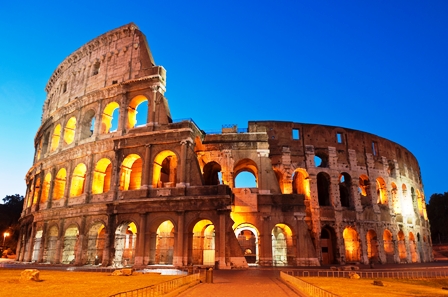
Air pollution is a key factor in the degradation of surfaces of historical buildings and monuments. The impact of pollutants emitted into the atmosphere on materials is enormous and often irreversible. Corrosion caused by chemicals and soiling caused by particles can lead to economic losses but, more importantly, to the destruction of our cultural heritage, an important component of our individual and collective identity.
A recent study led by the Italian Institute for Environmental Protection and Research (ISPRA) and the Institute for Conservation and Restoration of Heritage (ISCR) shows that in Rome about 3600 cultural heritage made of calcareous stone (limestone) and 60 cultural heritage objects made of bronze are at risk of deterioration. As a response to this threat, Italy has been engaged in the development of strategies and technologies to safeguard cultural heritage assets for many years.
The recent study finds that loss of material as a result of air pollution in Rome is estimated to be between 5.2 and 5.9 microns per year for marble and between 0.30 and 0.35 microns per year for bronze. Evaluations were made using the dose-response functions for corrosion developed in the frame of the International Cooperative Programme on Effects of Air Pollution on Materials, including Historic and Cultural Monuments (ICP Materials) under the UNECE Convention on Long-range Transboundary Air Pollution (LRTAP Convention).
Recently, a study on five cultural monuments included in the UNESCO World Heritage List located in different European cities shed some more light on corrosion of materials. While there has been an overall decrease by 50 per cent since 1987 as a result of improved air quality facilitated by the LRTAP Convention, changes over the most recent years have only been minor. In addition, with sulphur dioxide emissions having been reduced significantly, other pollutants such as nitrogen oxides and particulate matter are playing a relatively more important role in determining current corrosion damage.

